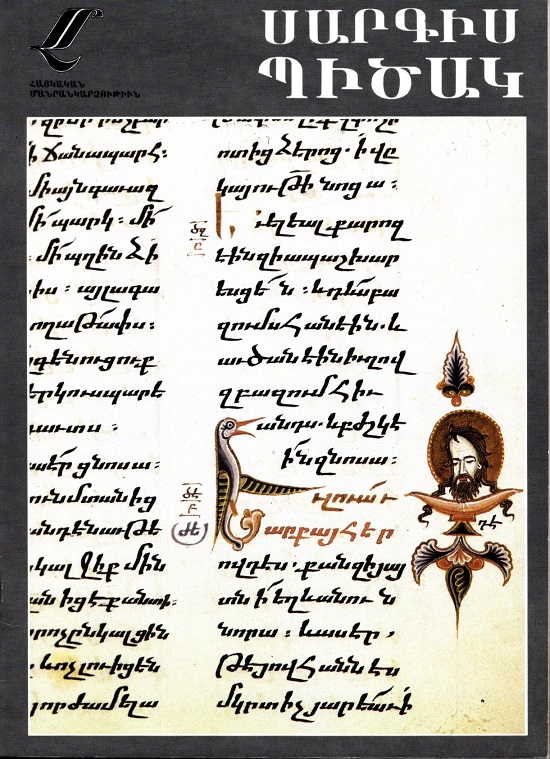In the age-old history of Armenian miniature painting, Sargis Pitsak is one of the most productive artists. About forty illustrated manuscripts attributed to him, have survived. Pitsak is also known to have been a scribe.
His name is first mentioned in a manuscript copied in 1301; in that manuscript, Pitsak's father, Grigor, wishes his son a long life. Sargis worked in different towns of Cilicia, such as Sis, Skevra, Drazark, Kopitar and elsewhere. His fame spread not only throughout Cilicie, but also in Greater and Lesser Armenia — in Sebastia, Taron, the land of Ararat, Aghtamar.
Pitsak copied and illustrated manuscripts on the request of king Levon IV, queen Mariun, the catholicos Hakob Klayetsi, bishop Stepanos of Sebastia, friar Andreas from Kosh, a village of Ayrarat, the miniaturist Avag and others.
Living during the difficult period of the downfall of the Cilician kingdom, when epidemics often followed wars, Pitsak depicted miracles and scenes of healing in the margins and within the text itself ("Gospel referring to Christ's healing practice"). He portrayed patients, blinds, paralytics, demoniacs, lepers. Pitsak has also left miniatures presenting his contemporaries: the catholicos Hakob Klayetsi together with his self-portrait and the evangelist Matthew, the portrait of queen Mariun in the
"Entry into Jerusalem", king Levon as a judge, etc. In the Sharaknots (hymnal) illustrated by him, Pitsak has drawn pictures of Nerses Shnorhali and other poets, in the margins.
Sargis Pitsak's paintings are characterized not only by motifs developed in Cilician miniature art, but also by the somewhat flatness of miniature painting in Greater and Lesser Armenia; plain, pure colours and some traits of the iconography and art of the Cappadocian frescoes. There is also a remote resemblance of Gothic miniature art (e.g. "Adam and Eve", "The Holy Trinity", "Self-Portrait" in the 1338 Bible, portraits of kings, shepherds and soldiers in the Christological cycle and in the margins).
According to facts available, Pitsak was familiar with Toros Roslin's art and he, himself, completed the illustration of a famous XIII c. Gospel (Matenadaran, Cod. 7651), in which some of the miniatures reflect Roslin's influence. In Sargis Pitsak's art there are definite principles which persisted in the artist's creations throughout his life and conferred an inimitable style to his miniature painting. His human figures seem to have been taken from life, with distinct attitudes and costumes, figures for whom the artist elaborated prototypes for each one separately: the aged, children, shepherds, paralytics, angels, women, princes and kings. These figures were transferred, using the same attitude, from one manuscript to another, from populous paintings to margins and vice versa. Movements are angular, eastern-ritual, the proportions of the human body are reduced. Objects, architecture and furniture are transformed into geometric symbolic ornaments. A distinct colour-range characterizes Sargis Pitsak's miniature painting: the main colours — red, blue and green are applied against a background which is either parchment or gold. Sometimes he used pink, silver and violet tints. These colours revive the mixture of yellow and white.
They seem to form a rainbow with the gold background, which is connected with the divine light, with its `radiance'. The miniatures have firm geometric proportions; they are drawn up either round the main axis or in counterbalancing forms.
VIGEN GHAZARIAN


